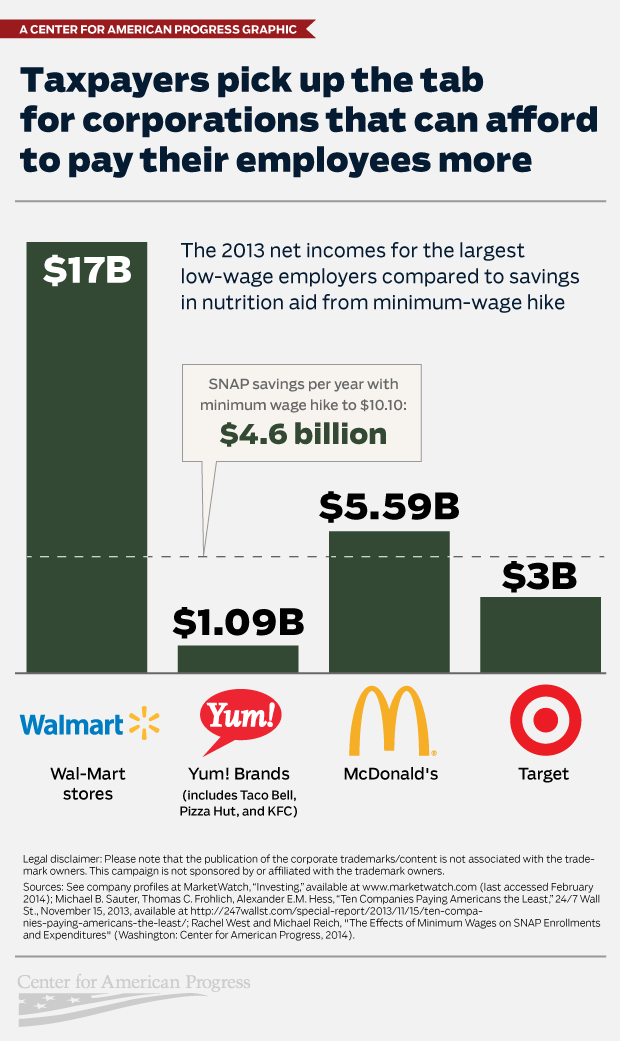Too many Americans are working long hours for wages that are too low to support their families. The current federal minimum wage of $7.25 is a poverty wage; it is just $15,080 annually for a full-time worker, which is $4,000 below the poverty line for a family of three. This helps explain why millions of low-wage workers look to public assistance programs such as the supplemental nutrition assistance program, or SNAP, for help.
The Fair Minimum Wage Act would raise the minimum wage to $10.10 by 2015, which would grow the economy by $22 billion, help 28 million American workers make ends meet, and lift 900,000 Americans out of poverty. It would also reduce costs for taxpayers because as wages increased, low-wage workers would rely less on nutrition assistance to put food on the table. In fact, a study from CAP and the Institute for Research on Labor and Employment at University of California at Berkeley finds that increasing the minimum wage to $10.10 an hour will generate $4.6 billion in annual savings in the Supplemental Nutrition Assistance Program, SNAP, formerly known as food stamps, or approximately $46 billion over 10 years.
SNAP is an effective nutrition program that helped millions of families keep food on the table, acted as an important economic stimulus, and improved health, education, and workforce outcomes for low-income children. Taxpayers can be proud of this investment and still wonder why so many working families need the safety net to stay afloat when many low-wage employers have not only recovered from the recession but their profits have increased. In fact, the net incomes of four of the largest low-wage employers, Wal-Mart, McDonald’s, Yum! Brands—which include Taco Bell, Pizza Hut, and KFC—and Target, represent five times the amount of cost savings in SNAP resulting from a minimum wage hike to $10.10. While the SNAP savings represent a significant reduction in safety net costs, they are a drop in the bucket for corporations enjoying billions in profits.

This begs the question: Why are corporations asking taxpayers to foot the bill for supplementing low wages when they can more than afford to pay a higher wage? It’s time to raise the minimum wage.
Melissa Boteach is the Vice President of the Poverty to Prosperity Program at the Center for American Progress and the Director of the Half in Ten Education Fund. Sarah Baron is a Field Associate with the Poverty to Prosperity Program at the Center for American Progress.